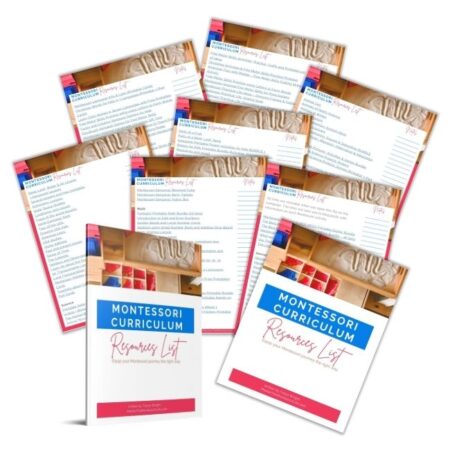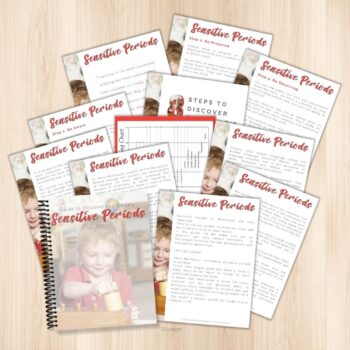
In this training, I will give you three very important categories in discipline to pay attention to in order to do discipline the Montessori way.
It is my hope that you find this training useful. I will discuss three very essential categories in discipline that you should pay attention to if you want to do discipline the Montessori way.
Full video training here:
Montessori Discipline
The first category has to do with the environment.
The Montessori environment is designed in a way that supports discipline.
There are specific materials and furniture that are placed in the environment in order to help children focus and stay on task.
The environment is also set up so that there is a clear flow and movement throughout the room.
This helps to avoid distractions and chaos.
The second category has to do with the teacher’s role in discipline.
The Montessori teacher is a guide and a facilitator.
They are there to support the child’s learning, but not to control it.
The teacher sets clear limits and expectations for behavior, but they also provide opportunities for the child to make choices and experience natural consequences.
The third category has to do with the child’s internal motivation.
In the Montessori method, we believe that children are innately motivated to learn.
This means that they will be more likely to follow rules and guidelines if they see them as being helpful in their learning process.
When children feel like they are in control of their own learning, they are more likely to be engaged and cooperative.
So, those are three essential categories in discipline that you should keep in mind when working in a Montessori environment.
Remember, the goal is to create an environment that supports learning, where the teacher is a guide, and where children are internally motivated to behave well.
Montessori Classroom Management
Now that we’ve talked about discipline, let’s move on to classroom management.
Classroom management is all about creating a positive learning environment.
This means having a well-organized classroom with clear rules and expectations.
It also means establishing routines and procedures that everyone can follow.
One of the most important aspects of effective classroom management is maintaining a positive relationship with your students.
This means being patient, kind, and respectful. It also means being firm when necessary.
Montessori teachers always keep the best interest of the child in mind.
Another important aspect of classroom management is maintaining a safe and orderly environment.
This means having a well-defined space for each activity and keeping materials organized and out of reach of small children.
Discipline The Montessori Way
Now that we’ve talked about the environment and the teacher’s role in discipline, let’s move on to the third category: the child’s internal motivation.
In the Montessori method, we believe that children are innately motivated to learn.
This means that they will be more likely to follow rules and guidelines if they see them as being helpful in their learning process.
When children feel like they are in control of their own learning, they are more likely to be engaged and cooperative.
One way to support this internal motivation is to provide opportunities for choice.
For example, you might give students a choice of two activities to do during work time.
This allows them to feel like they are in control of their learning and makes them more likely to be engaged in the activity.
Another way to support internal motivation is to allow for natural consequences.
This means that if a child chooses not to follow the rules, they will experience the natural consequences of their actions.
For example, if a child doesn’t clean up their materials after work time, they may not have access to them the next day.
This helps children to understand that there are consequences to their actions.
They are in control of the outcome.
Discipline Categories
So, those are three essential categories in discipline that you should keep in mind when working in a Montessori environment.
Remember, the goal is to create an environment that supports learning.
This is where the teacher is a guide, and where children are internally motivated to behave well.
The Montessori Method of discipline is based on three important categories.
These are the environment, the teacher’s role, and the child’s internal motivation.
The environment includes both the physical space and the culture of the classroom.
In order to create a positive learning environment, it is important to have a well-organized classroom with clear rules and expectations.
It is important to establish routines and procedures that everyone can follow.
The teacher’s role in discipline is to maintain a positive relationship with your students.
This means being patient, kind, and respectful. It also means being firm when necessary.
Montessori teachers always keep the best interest of the child in mind.
#MasterTheMontessoriLifeShow #themontessoriwayfoundationsframework #themontessoriwaypreproom #themontessoriguide #themontessorimethod #themontessoriway #MasterTheMontessoriLife #montessori #montessoriathome #montessoritopics #montessorieducation #themontessorilife #themontessorijourney #themontessoriexperience #montessoripodcast #montessoripodcasts #montessoriprogram #centeredmontessoriguide #normalizedchild #montessoridays #montessorian #montessoriactivity #montessorienvironment #montessoriquestions #montessorihomeschool #montessorikids #montessorimom #montessoriactivities #montessorimaterials
Wardrobe from: http://bit.ly/TNHstitchfix




Leave a Reply